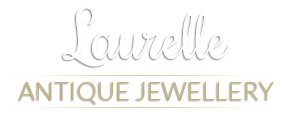A Guide To Understanding Jewellery Hallmarks
Hallmarks are most associated and commonly used when creating silver, gold, palladium and platinum items. Hallmarks, as such, are not only found on jewellery items, but silverware of every kind from flatware to tea sets and trinket boxes.
The practice of hallmarking began with the ‘marking’ of silver to use as coins, in ancient times. Silver being such a naturally soft metal could be easily fashioned into coins. It was also durable. That said, silver required alloying with other metals to fortify and harden it.
Because it was important every coin was not just equal in size, but also in purity, a ratio of purity that permitted both the most durable and most pure form was established. And so, in 1158, King Henry II decreed the alloy of 92.5% silver to 7.5% copper the legal standard in British coinage, and named the allow Sterling Silver.
Then, in 1300, King Edward II created the first recognisable hallmark, The Leopard’s Head Crown. The Leopard Head’s Crown was only ever stamped upon silver which had been assayed to prove it met the standard of Sterling Silver. Hence, hallmarks were conceived and consequently have developed to now be used as a means of establishing information as to the purity, origin, date and maker of a piece of jewellery.
The Five Standard Marks
Because learning how to read hallmarks can seem, initially, a daunting task, it is useful to begin with the marks most commonly used. Hence, the five standard marks are:
The Walking Lion
which is used on items made in England.
The Standing Lion
which is used on items made in Edinburgh. The Standing Lion is distinguishable from The Walking Lion as the Edinburgh mark shows a lion standing on its hind legs. Meanwhile, The Walking Lion depicts a lion in a more typical pose, with all but one of its limbs firmly grounded.
The Thistle
which is used on items made in Glasgow.
The Crowned Harp
which is used on items made in Dublin.The Image of Britannia, lastly, is the mark used on all Britannia standard silver. As stated in the Hallmarking Guidance Notes published by the UK Government, it is an actual ‘legal requirement to hallmark all articles consisting of gold, silver, platinum or palladium’. Therefore, recognising these marks alone is often sufficient in determining whether an item is both British and if it is ‘genuine’.
Town and City Marks
Town and City Marks are numerable and useful in more accurately tracing an item to the place in which it was made. Unsurprisingly, the most common and well recognised town and city marks include the following:
The Crowned London Lion
Pre 1820 and The London Lion post 1820.The Lion used to denote silver items made within the confines of London lost its crown in 1820. The mark used today in London still features a lion’s head, but it is larger and no longer wears a crown.
The Birmingham Anchor
The Birmingham mark is easily recognisable as an anchor, the pre-existent symbol of the Birmingham Assay Office. Interestingly, an item bearing the Birmingham Anchor was not just made in Birmingham, but also assayed in the world’s biggest assay office.
The Sheffield Crown and the Yorkshire Rose
The Sheffield Crown mark was in use until 1974, when it was changed to the Yorkshire Rose.
The Chester Sword Arms
The Chester mark depicts a sword, centrally, surrounded by three sheaves of wheat.
The Edinburgh Castle
The Edinburgh mark features a tri-towered castle in homage to the city’s own castle.
The Glasgow Tree
The Glasgow tree mark design was inspired by the Glasgow Coat of Arms, and features a tree, a fish and a bell.
Duty Marks and Date Letters
There are only two ‘duty marks’, that of the King’s head and that of the Queen’s head. Whether the Queen’s head or King’s were used depended on whether a king or Queen occupied the thrown at the time. Duty marks, as the name implies, were used once to show that duty had been paid on the item, but are today no longer used. Hence, they are today useful in helping to asses the age of an item.Date Letters are though a far more reliable and easy way to date items, hence, their introduction. Most simply, an item is stamped with a letter which refers to a specific year – the year in which the item was made. Date letters are used not unlike car registration numbers and licence plates, recycling the letter within the roman alphabet to show the year in which an item was created. In 1998, date letters ceased to be one of the four previously compulsory hallmarks any genuine silver, gold or palladium item had to bear.
Makers’ Marks
Marker’s Marks are quite simply a form of signature, much as an artist marks a painting with. As such, many items do not feature a maker’s mark, but a maker’s mark can add value to an item, if the maker was well known or popular.
Purity Marks
The shape of a purity mark used depends upon the metal it is marking:
Silver – an oval
Platinum – a pentagon
Gold – a rectangle featuring cut-corners
Palladium - an Isosceles trapezoid or three interlocked circlesIn all cases and kinds of metals, the larger the number stamped within the above shapes the purer the metal. The move from the use of an isosceles trapezoid to three interlocked circles when marking palladium happened in 2010. While it bears no relation to the purity of the metal, it is yet another change over time which can help to date a palladium item.To learn more about hallmarks and about the wealth of hallmarks not covered here, including commemorative and international convention marks, Bradbury’s Book of Hallmarks is an invaluable investment.

